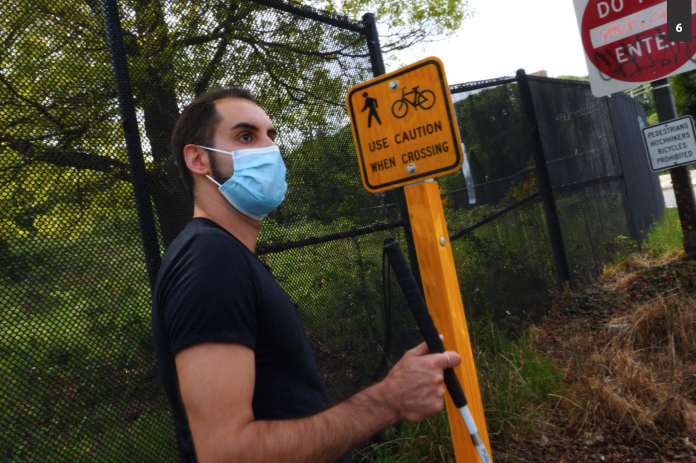
“Nothing about us without us” is a rallying cry that first came into wide use in the United States by disability activists in the 1990s and has since been applied to many different fights for civil rights. The slogan captures the essence of a new report, Transportation Access for All: Washington State, published by Disability Rights Washington (DRW), which in under 50 pages poignantly lays out the “urgent need for ‘radical inclusion’ of disabled nondrivers in the planning processes across every level of our transportation systems.” It also details with great precision transportation policy measures created by and for disabled people that would improve the lives of all transportation users.
Not withstanding its thoughtful policy recommendations, the beating heart of the document is its stories, which were taken from over 130 interviews completed with disabled people living in every legislative district in Washington State. During the interviews people were asked questions like, how do you get around? What are the challenges? What are the things you love about your community? And what would you like to change? What is your advice for the transportation planners, policymakers, and decision-makers in our state?
First published through DRW’s interactive transportation access story map, the interviews were then analyzed and organized into a report based on 15 different themes. In the report each theme begins with story excepts that serve as representations of the qualitative data compiled DRW, which are followed by a passage analyzing what the researchers learned about the theme, and then a list of theme-specific recommendations. At the end of the document is a useful summary of recommendations divided up by intended readers, which include elected leaders, agency staff, transit providers, and transportation departments.
In the introduction, the report writers ask policymakers and those in power to view reading the report as an opportunity to “humbly perceive their ignorance of people who live differently from them.” It’s a request that can feel a bit pushed — that is until the reader turns the page and comes across the first story and supporting photographs. From there on, the lived experiences of disabled people grappling with a transportation system that mostly ignores their existence takes hold and doesn’t let go.
Powerful voices narrate struggles and dreams
Shortly after beginning to read the report, I experienced the unsettling realization of how little I knew about the extent to which our transportation system is failing disabled people. While I identify as able-bodied, I have a chronic disease (Crohn’s) that can cause abdominal and joint pain that sometimes make it difficult for me to walk or stand for more than short intervals. In my twenties, I also served as an evening and weekend caregiver for young power wheelchair user, an experience that vividly illustrated for me the importance of accessible sidewalks and King County Metro bus accessibility.
However, no personal experience or observation prepared me for the testimonies shared in the report, in part because they are so diverse. In theme after theme, readers encounter examples of how the current transportation system fails disabled nondrivers in ways both big and small. Anecdotes range from harrowing, such as when Steph, a wheelchair user in Port Angeles recounts the anxiety she feels every time she crosses busy Highway 101 (which has no pedestrian signal) to access her bus stop, to quietly heartbreaking, like when Megumi, a legally blind woman living on Mercer Island describes how she stocks up on groceries every two weeks so she doesn’t have to rely on friends to take her to the store and attends her yoga classes and Buddhist temple much less frequently now than she did when she was sighted.
At every turn, people’s responses to the interview questions reveal surprises that underscore the importance of involving people with disabilities in transportation planning. One strong example occurs when Tanisha, a wheelchair user who lives in West Seattle and relies on King Country Metro buses for transportation shares why she often has to use her wheelchair on the road. “I’ve had people yell at me that it’s not safe, and I understand,” Tanisha said in the report. “But they don’t understand. If I get thrown off the sidewalk into traffic because there’s a root or uneven piece of sidewalk, that is not safe.”

Tanisha who lives in West Seattle would like to see safer sidewalks so she would not need to roll her wheelchair on the street. (Credit: DRW) 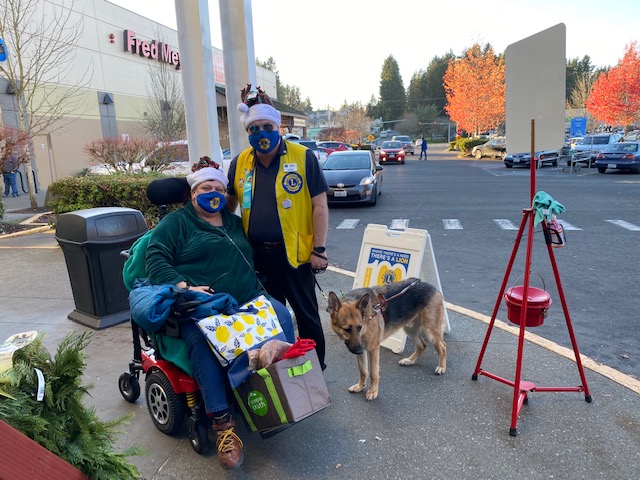
JR and Kat would like to see elected leaders and decision makers understand how difficult and exhausting it can be just getting around as a person with a disability. (Credit: DRW) 
Megumi lives in Mercer Island and wishes she had better transportation options so she would not have to rely on friends to buy groceries. (Credit: DRW)
Gratitude for services like paratransit are expressed throughout the stories, despite the significant scheduling challenges presented for for the people who rely on it. Jamin, who has lived in Port Orchard for his whole life and uses a scooter to get around, expresses appreciation for the paratransit services in community, but shares his struggles with the poor condition and design of sidewalks in the city’s downtown. Once he fell down while trying to catch a bus because the downtown sidewalk was inaccessible.
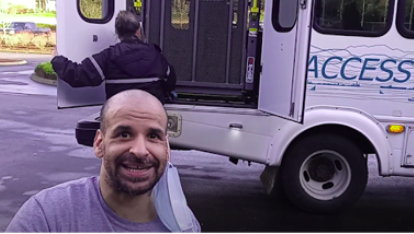
Reading the stories helped me to be more appreciative of my own privilege — I am fortunate to live in area where I can walk one short block to a small grocery store and a bus stop. Ridehailing vehicles are never more than a few minutes away — and in emergency circumstances, I can afford to use them without question. As a result, I’ve never felt the transportation system has failed me, whereas disabled nondrivers living in every corner of the state are failed at almost every turn.
What are the top areas of concern?
Here are a few of the areas of critical concern that arose in the report.
- Unsafe and missing sidewalks pose a pervasive threat to people with disabilities. All across Washington, in areas ranging from urban to rural, many sidewalks do not have basic Americans with Disabilities Act (ADA) infrastructure or are entirely absent. According to the report, when participants were asked, “What is the biggest barrier to getting where you need to go in your community?” problems related to sidewalks was the number one response, followed closely by unsafe crosswalks and intersections. Investing in a safe and accessible network of sidewalks and road crossings would radically improve the lives of many people living with disabilities.
- Transit that is infrequent, unreliable, or has poor connections prevents disabled people from taking both necessary and discretionary trips. Many participants shared how access to a quality or substandard transit system was a controlling factor in their lives. For people living in areas with strong transit access, more opportunities for access to jobs, medical care, or simply spending time with family and friends were available. On the other hand, those living in areas with little or no transit often spoke of difficulty meeting daily needs or struggling with social isolation. The need for better transit wayfinding and shelters was also frequently cited. Investing in quality transit for communities in all areas of Washington State would substantially improve mobility for disabled people.
- Taxis and ridehailing vehicles are often not an option for people with disabilities. Because ridehailing and taxi services are not required to have universally accessible fleets, many areas of Washington State lack wheelchair access in for-hire vehicles. The report said that even in King County, which is home to 2.3 million people, there are only 60 wheelchair accessible vehicles available for hire. Cities should follow in the example of New York City, which has increased its number of accessible taxis.
- Transportation for people living with disabilities who are also parents and caregivers is particularly challenging. Many paratransit agencies limit access to children or don’t have the infrastructure to support carseats or strollers. Space for wheelchairs and strollers on public buses can also be limited. Transit agencies need to enter into conversation with disabled parents and caregivers to learn what improvements and interventions would effectively increase their mobility options.
- Mobility barriers and housing scarcity are economically harmful for disabled people. Many disabled nondrivers want to work and are highly skilled professionals, but finding a reasonable commute presents a major hurdle. Some participants described having daily commutes that involved multiple transit connections and stretched out into two to three hours — or more– for each trip, a truly herculean feat to endure on a regular basis. These mobility limitations have a deep impact on employment, but they also impact housing choices too. Many participants spoke of how hard it is to afford accessible housing with access to transit in a state with skyrocketing housing costs. The scarcity of transit and safe street infrastructure puts undue pressure on choosing a place to live and work. Increasing the amount of affordable, and ADA accessible, housing units would increase choices for people with disabilities and increase their economic independence and resilience.
What would radical inclusion look like?
Radical inclusion would mean that disabled nondrivers would participate in all levels of planning and decision-making for transportation systems. Of course such inclusion should not have to be considered radical — and the fact that is speaks to the systemic exclusion of people living with disabilities from many of the decision-making processes that impact their lives and our society as a whole.
In order to increase participation, Anna Zivarts, director of the Disability Mobility Initiative, explained that it is not enough for transportation agencies to have unpaid accessibility committees that are sidelined and do not have a clear process for the incorporation of their recommendations into policy.
“We really need to make sure that non-drivers, that disabled folks can be part of the process. And so it’s time to hire people, for your agencies, it’s time to consult people, it’s time to pay people for their advice or their expertise,” Zivarts said during a press conference for the report. “So that you can really, as transportation planners, as elected leaders, as transportation advocates, start to include these perspectives that will rich, that will deepen and make richer your analysis of the transportation system, and help you come up with solutions that are better not only for non-drivers, but for everyone.”
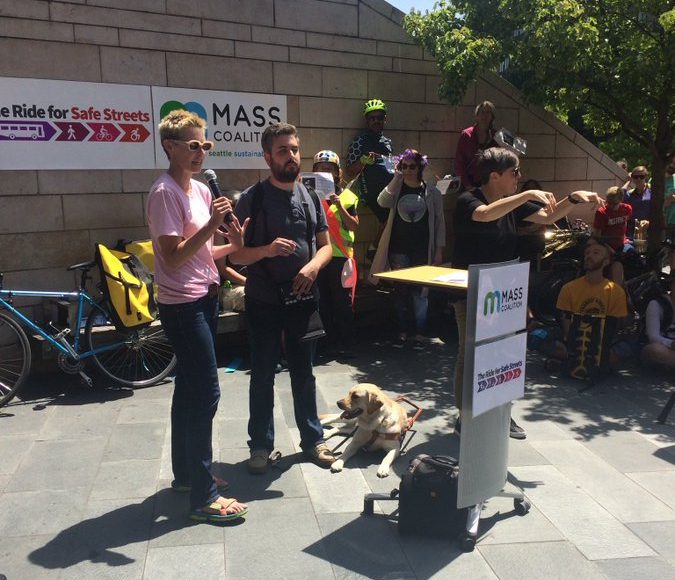
Radical inclusion would also need to result in radical prioritization of funding, divesting from highways so that funding is available for making sidewalks and intersections safer. Disability activists are already demanding changes in this regard. However, it will be up to lawmakers to pass legislation and budgets that place the needs of people of all ages and abilities over vehicles.
Unfortunately, President Biden’s big 2021 infrastructure bill downgraded investment in transit from $49 million to $39 million as it passed through the Senate. Innovative programs like Reconnecting Communities, focused on urban freeway removal and mitigation efforts, were also reduced to a tiny fraction of their initial size. Yet there is some room for hope. The infrastructure bill is still going through the reconciliation process in the House, so transit advocates are still crossing their fingers for improvements.
Read the Transportation Access for All report here.
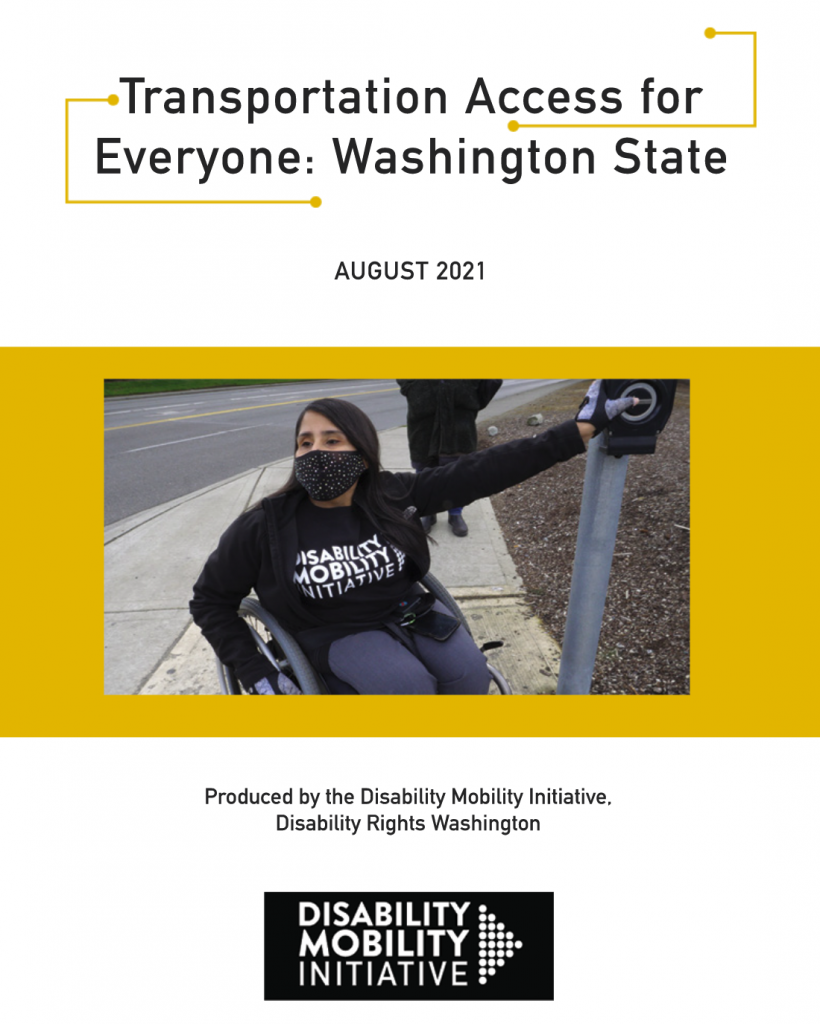
Natalie Bicknell Argerious (she/her) is a reporter and podcast host at The Urbanist. She previously served as managing editor. A passionate urban explorer since childhood, she loves learning how to make cities more inclusive, vibrant, and environmentally resilient. You can often find her wandering around Seattle's Central District and Capitol Hill with her dogs and cat. Email her at natalie [at] theurbanist [dot] org.


